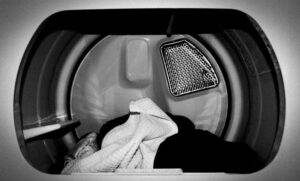A refrigerator is an essential appliance in our daily lives. It plays a crucial role in preserving food, keeping it fresh, and preventing spoilage. Without a functional refrigerator, we would have to rely on other methods of food preservation, such as canning or drying, which can be time-consuming and may not always be effective.
A malfunctioning refrigerator can cause a great deal of inconvenience. Imagine coming home after a long day at work, only to find that your refrigerator is not cooling properly. Your food may spoil, and you may have to throw away items that were once perfectly good. This not only leads to wastage but also adds unnecessary expenses.
In addition to the inconvenience, a malfunctioning refrigerator can also pose health risks. If the temperature inside the refrigerator is not maintained at the proper level, bacteria can multiply rapidly, leading to foodborne illnesses. It is therefore crucial to ensure that your refrigerator is functioning properly and address any issues as soon as they arise.
Key Takeaways
- A functional refrigerator is important for preserving food and preventing waste.
- Signs of a refrigerator not starting include no cooling, unusual noises, and a warm interior.
- Common causes of a refrigerator not starting include power issues, thermostat problems, and compressor malfunction.
- Checking the power source and inspecting the thermostat are important steps in troubleshooting a non-starting refrigerator.
- Regular maintenance and cleaning of condenser coils can help prevent issues and keep your refrigerator running smoothly.
Signs of a Refrigerator Not Starting: Identifying the Problem
There are several signs that indicate a refrigerator is not starting or functioning properly. One of the most obvious signs is when there is no cooling inside the refrigerator. If you notice that your food is not staying cold or that it is spoiling quickly, it may be an indication that your refrigerator is not starting.
Unusual noises coming from the refrigerator can also be a sign of a problem. If you hear loud banging or grinding noises, it could indicate an issue with the compressor or other internal components.
Another sign of a refrigerator not starting is warm temperatures inside the unit. If you open the door and feel warm air instead of cold air, it may be an indication that your refrigerator is not cooling properly.
It is important to identify these signs early on to prevent further damage to your refrigerator and avoid potential health risks associated with spoiled food.
Common Causes of a Refrigerator Not Starting: Exploring the Possibilities
There are several common causes of a refrigerator not starting. One of the most common causes is a power supply issue. If your refrigerator is not receiving power, it will not start. This can be due to a tripped circuit breaker, a blown fuse, or a loose electrical connection.
Another common cause is a malfunctioning thermostat. The thermostat is responsible for regulating the temperature inside the refrigerator. If it is not functioning properly, it may not signal the compressor to start, resulting in no cooling.
Compressor failure is another possible cause of a refrigerator not starting. The compressor is responsible for circulating refrigerant and maintaining the temperature inside the refrigerator. If it fails, the refrigerator will not cool properly.
Condenser coil blockage can also prevent a refrigerator from starting. The condenser coils are located at the back or bottom of the refrigerator and are responsible for dissipating heat. If they become blocked with dust or debris, they cannot perform their function effectively, resulting in poor cooling or no cooling at all.
Checking the Power Source: Ensuring Proper Electrical Connection
If you suspect that your refrigerator is not starting due to a power supply issue, the first step is to check the power source. Start by checking if the circuit breaker that controls the outlet where your refrigerator is plugged in has tripped. If it has, reset it and see if that resolves the issue.
If the circuit breaker is not tripped, check if there is power to the outlet by plugging in another appliance or using a voltage tester. If there is no power, check if there is a blown fuse in your electrical panel that controls that circuit. Replace any blown fuses and see if that solves the problem.
If there is power to the outlet but your refrigerator still does not start, check if the power cord is securely plugged into the outlet. Sometimes, the cord can become loose over time, causing a poor electrical connection. Ensure that the cord is plugged in securely and try starting the refrigerator again.
Inspecting the Thermostat: Verifying Temperature Settings
If the power source is not the issue, the next step is to inspect the thermostat. Start by checking the temperature settings on your refrigerator. Make sure that the temperature control dial is set to the desired level and that it is not accidentally turned off or set too low.
If the temperature settings are correct, you can test the thermostat using a multimeter. Set the multimeter to the ohms setting and touch the probes to the terminals on the thermostat. If the multimeter does not show any resistance, it indicates that the thermostat is faulty and needs to be replaced.
Testing the Compressor: Checking for Proper Functioning

If the thermostat is not the issue, you can test the compressor to see if it is functioning properly. Start by unplugging your refrigerator and removing the access panel at the back or bottom of the unit to expose the compressor.
Locate the start relay, which is a small device connected to the compressor. Remove it and shake it gently. If you hear a rattling sound, it indicates that the start relay is faulty and needs to be replaced.
You can also test the compressor using a multimeter. Set the multimeter to the ohms setting and touch one probe to each terminal on the compressor. If the multimeter shows a reading of infinity or zero, it indicates that the compressor is faulty and needs to be replaced.
Examining the Condenser Coils: Cleaning for Optimal Performance
If your refrigerator is still not starting, it may be due to condenser coil blockage. To examine and clean the condenser coils, start by unplugging your refrigerator and removing any access panels at the back or bottom of the unit.
Use a vacuum cleaner with a brush attachment to gently remove any dust or debris from the coils. Be careful not to damage the coils or any other components while cleaning.
Once the coils are clean, plug in your refrigerator and see if it starts and cools properly. Regularly cleaning the condenser coils can help prevent blockage and ensure optimal performance of your refrigerator.
Troubleshooting the Defrost Timer: Addressing Malfunctioning Components
If none of the previous steps have resolved the issue, you may need to troubleshoot the defrost timer. The defrost timer is responsible for regulating the defrost cycle in your refrigerator. If it is malfunctioning, it can prevent the refrigerator from starting.
To troubleshoot the defrost timer, start by locating it. It is usually located inside the control panel or behind the kick plate at the bottom of the refrigerator. Consult your refrigerator’s manual or manufacturer’s website for specific instructions on how to access and troubleshoot the defrost timer.
Once you have located the defrost timer, use a screwdriver to manually advance it to the defrost cycle. If your refrigerator starts and cools properly when you do this, it indicates that the defrost timer is faulty and needs to be replaced.
Repairing Faulty Parts: Replacing Components and Repairing Wiring
If you have identified a faulty component during your troubleshooting process, such as a thermostat, start relay, or defrost timer, you will need to replace it to ensure optimal performance of your refrigerator.
To replace a faulty component, start by unplugging your refrigerator and removing any access panels necessary to access the component. Disconnect any wires or connectors connected to the component and remove it from its mounting location.
Install the new component in its place and reconnect any wires or connectors. Make sure that all connections are secure and that there are no loose or damaged wires.
If you notice any damaged wiring during your troubleshooting process, it is important to repair it to prevent further damage to your refrigerator. Start by unplugging your refrigerator and identifying the damaged wiring. Use electrical tape or wire connectors to repair any damaged wires.
Preventative Maintenance: Keeping Your Refrigerator Running Smoothly
To keep your refrigerator running smoothly and prevent future issues, it is important to perform regular preventative maintenance. Here are some tips to help you maintain your refrigerator:
1. Clean the condenser coils regularly: Dust and debris can accumulate on the condenser coils over time, reducing their efficiency. Clean the coils at least once every six months using a vacuum cleaner with a brush attachment.
2. Check the temperature settings: Regularly check the temperature settings on your refrigerator to ensure that they are set to the desired level. Adjust them if necessary.
3. Keep the refrigerator well-stocked: A well-stocked refrigerator helps maintain a more stable temperature. If your refrigerator is not fully stocked, consider filling empty space with jugs of water.
4. Avoid overloading the refrigerator: Overloading the refrigerator can restrict airflow and reduce its cooling efficiency. Make sure there is enough space between items for air to circulate.
5. Check the door seals: Inspect the door seals regularly for any signs of wear or damage. Replace them if necessary to ensure a tight seal and prevent cold air from escaping.
6. Keep the refrigerator clean: Regularly clean the interior of your refrigerator, including shelves, drawers, and door compartments, to prevent odors and bacteria growth.
In conclusion, a functional refrigerator is essential for our daily lives, and it is crucial to identify and address any issues early on to prevent further damage. By following the steps outlined in this post, you can troubleshoot and repair common issues with your refrigerator and keep it running smoothly with preventative maintenance. Remember to always prioritize safety when working with electrical appliances and consult a professional if you are unsure or uncomfortable with any repairs.
If you’re dealing with a refrigerator that won’t start, it can be frustrating and inconvenient. However, before calling a professional, it’s worth diagnosing the issue yourself. In our latest blog post, “Refrigerator Not Starting: Diagnosing and Solutions,” we provide helpful tips and tricks to troubleshoot common problems that may be preventing your refrigerator from starting. From checking the power supply to examining the thermostat, our article covers all the essential steps to get your fridge up and running again. Don’t let a malfunctioning refrigerator spoil your day – read our article for expert advice and solutions.
What Are Some Common Reasons Why a Refrigerator Won’t Start Running?
When troubleshooting refrigerator not running, common issues include a faulty thermostat, broken start capacitor, or a malfunctioning compressor. Other reasons might be a power supply problem, a worn-out overload relay, or a broken temperature control board. It’s recommended to consult a professional for proper diagnosis and repair.



